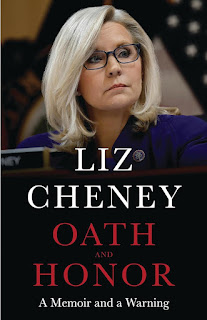The Little Ice Age: How Climate Made History, 1300-1850 by Brian M. Fagan
Published in 2000 by Basic Books
Brian Fagan's The Little Ice Age: How Climate Made History, 1300-1850 is, by definition, an introduction to the climate phenomenon of the same name. Actually, it is quite similar to a History Channel documentary of the same name. On page xix Fagan notes that historians are either "parachutists" (big picture) or "truffle hunters" (love all of the details of one particular era or topic). Fagan warns that this is a parachutist book - an overview.
So, what of this overview? Fagan starts with the Vikings and covers an area that is better covered by Jared Diamond's Collapse: How Societies Choose to Fail or Succeed . However, his stories of how the fishing industry was affected by the shift to a colder climate was surprisingly interesting.
. However, his stories of how the fishing industry was affected by the shift to a colder climate was surprisingly interesting.
A lengthy discussion of how the colder climate change brought more disease, famine and general mayhem is punctuated by the single best one page description of the changes in farming methods that came about in the 1600-1700s that I have ever read (page 107).
An interesting (and too short) section on glaciers proved quite fascinating and should be required reading for those that point to the melting of those "ancient" glaciers in our day as a cause for worry. If 200 years old is ancient, well...
Frequent maps are a big positive but some of them are unnecessary. However, too many maps is much better than the normal too few that are in most books.
The end of the book gets bogged down in the Irish Potato Famine. We go from being a parachutist to a truffle hunter in this section.
The last chapter is a commentary on something out of the scope of the book's stated thesis. We leave the Little Ice Age and receive a lecture on Global Warming that is at variance with some of the things we've just read. Early on in the book he tells us the Medieval Warm Period was warmer than we are now (p. 17) and spent the better part of 200 pages telling us that cooling brings famine, death and disease. Why is global warming so bad then? On page 206 he mentions cattle herding as a source of methane over the last 150 years. In the United States at least, cattle herding was only possible by clearing out the deer and buffalo east of the Mississippi and by killing off millions of buffalo out west (imagine herds from one horizon to the other in the Great Plains) to make room for millions of head of cattle. To me, that seems to be a methane trade-off.
Regardless, this is really a nice little book. You'll undoubtedly learn something new. Skip the last chapter.
I rate this book 4 stars out of 5.
This book can be found on Amazon.com here: The Little Ice Age: How Climate Made History 1300-1850 .
.
Reviewed on December 31, 2008.
Note: there is a revised edition of this book that was published in 2019.
So, what of this overview? Fagan starts with the Vikings and covers an area that is better covered by Jared Diamond's Collapse: How Societies Choose to Fail or Succeed
A lengthy discussion of how the colder climate change brought more disease, famine and general mayhem is punctuated by the single best one page description of the changes in farming methods that came about in the 1600-1700s that I have ever read (page 107).
An interesting (and too short) section on glaciers proved quite fascinating and should be required reading for those that point to the melting of those "ancient" glaciers in our day as a cause for worry. If 200 years old is ancient, well...
Frequent maps are a big positive but some of them are unnecessary. However, too many maps is much better than the normal too few that are in most books.
The end of the book gets bogged down in the Irish Potato Famine. We go from being a parachutist to a truffle hunter in this section.
The last chapter is a commentary on something out of the scope of the book's stated thesis. We leave the Little Ice Age and receive a lecture on Global Warming that is at variance with some of the things we've just read. Early on in the book he tells us the Medieval Warm Period was warmer than we are now (p. 17) and spent the better part of 200 pages telling us that cooling brings famine, death and disease. Why is global warming so bad then? On page 206 he mentions cattle herding as a source of methane over the last 150 years. In the United States at least, cattle herding was only possible by clearing out the deer and buffalo east of the Mississippi and by killing off millions of buffalo out west (imagine herds from one horizon to the other in the Great Plains) to make room for millions of head of cattle. To me, that seems to be a methane trade-off.
Regardless, this is really a nice little book. You'll undoubtedly learn something new. Skip the last chapter.
I rate this book 4 stars out of 5.
This book can be found on Amazon.com here: The Little Ice Age: How Climate Made History 1300-1850
Reviewed on December 31, 2008.
Note: there is a revised edition of this book that was published in 2019.












Comments
Post a Comment